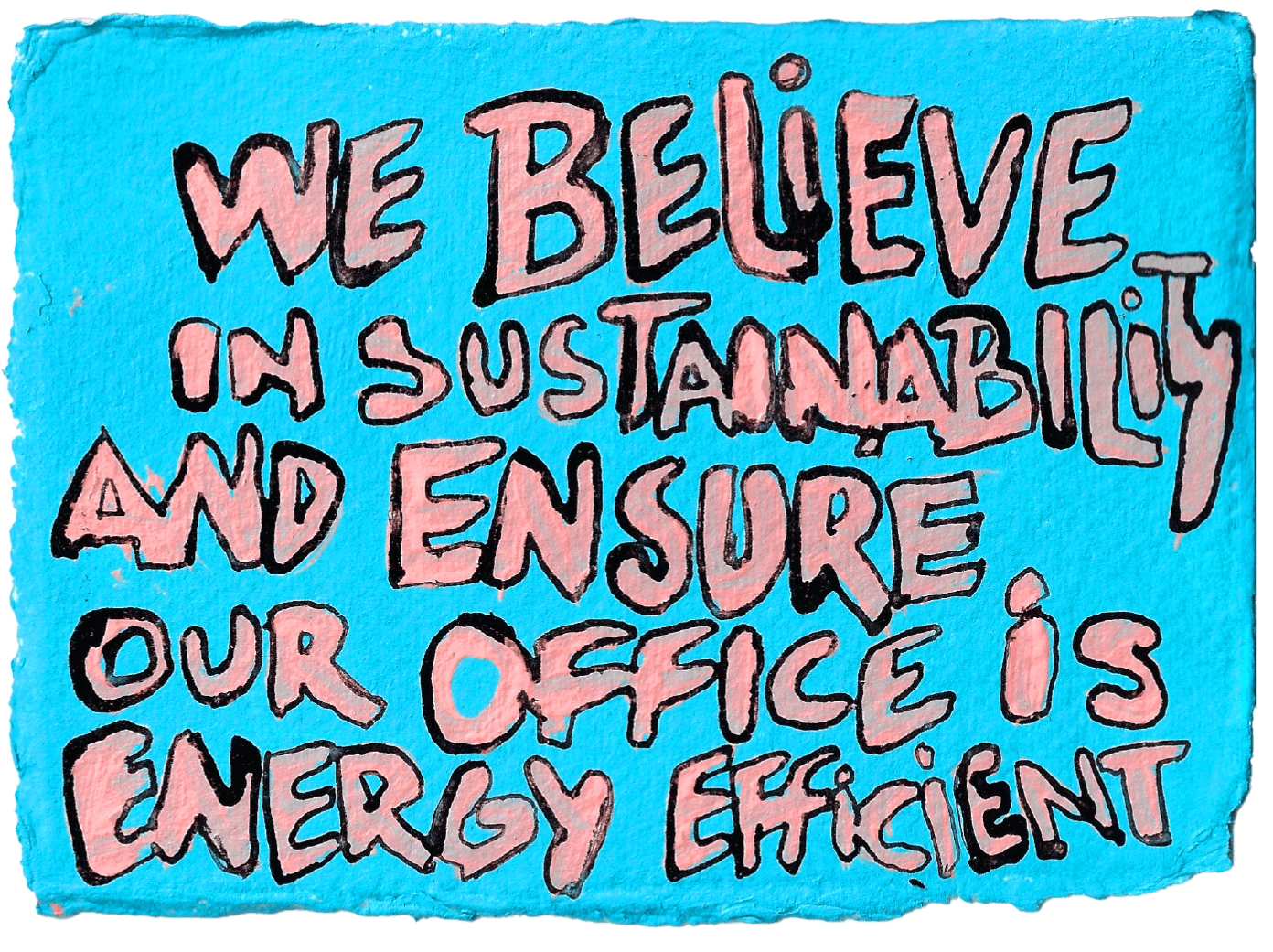We’ve seen it before. A line buried in a corporate website that says something like:

It sounds nice.
It ticks a box.
It makes a company look contemporary.
But what does it mean?
Does it mean there are solar panels on the roof?
Does it mean double-glazed windows, or motion sensors in the bathroom?
Does it mean that during the construction of the building, someone, anyone, paused to think about the carbon impact of the materials used, the orientation of the structure, or how many years the office would remain fit for use before it needs to be gutted and rebuilt?
Or does it mean the air conditioning is left running all day while hollow concrete bricks and oversized slabs do most of the talking?
There’s a word for this kind of well-meaning, vaguely benevolent statement: green gloss. A layer of reassurance that sounds like action but is often just decoration. We’re not suggesting that companies shouldn’t talk about sustainability. We’re suggesting they should know what they’re talking about.
If you say your office is energy efficient, on what benchmark is that claim based? What were the sustainability criteria during design? Is the structure designed leanly, with an awareness of embodied carbon? Has there been a lifecycle assessment during construction and operation? How many of these questions are even being asked?
Then there's the second kind of sentence that often shows up right next to the first:
“We believe in giving back to society and supporting communities.”
Again: sounds good. But whose society? Which communities? How are you supporting them? Through workshops? Through realigned business models? Through shared value creation? How do you know the support is working? If you're not actively co-creating value with others, is “support” just another word for “a little bit of branding wrapped in a charitable bow”?
These are the kinds of questions we explored in an episode of The Human Agenda, our podcast on equity, culture and systems. In that conversation, we spoke with Marsha Ramroop, former BBC journalist, RIBA's Director of Inclusion & Diversity, and founder of Unheard Voice Consultancy.
In that episode, we discussed why sustainability and inclusivity must be understood together, not as parallel values, but as inseparable drivers of ethical design and impact.
▶︎ Listen to the podcast: Cultural Intelligence in Design and the Built Environment
Let’s turn the mirror inward. Is the company culture itself sustainable? How are people hired, heard, and held? Is well-being baked into the business model or bolted on?
In meaningful organisations, sustainability is not a separate pillar, it is threaded through the fabric of strategic planning, reviewed annually with the same seriousness as financial performance. This involves setting clear, tailored goals that reflect a company’s environmental, social, and economic impact. Reducing both operational and embodied carbon must become a year-on-year commitment. Workspaces should be designed for long-term adaptability, human health, and efficient use of resources. Purchasing decisions must take into account the provenance of materials and the integrity of supply chains, favouring local and circular economies wherever possible. Inclusivity is not solved through a policy alone it must be informed by cultural intelligence and shaped by diverse voices across leadership and operations. Social well-being requires more than good intentions; it requires structural support. All of this points to the need for specialist guidance: periti who understand the consequences of material choices, sustainability experts who can map actions to the UN Sustainable Development Goals, and professionals trained in equity, governance, and inclusion. These are not abstract ideals. Frameworks like these remind us that ethical sourcing, transparent governance, employee engagement, and community involvement are measurable practices. Sustainability, when done well, is neither performative nor peripheral, it is professional, deliberate, and designed into the bones of a business.
That urgency was made clear in a recent Bloom House lecture (a project by Bureau 105) led by Marie-Louise Schembri, Sustainability Director at Hilson Moran. Titled A Practical Path to Net Zero Carbon in Buildings, the session addressed the growing scrutiny around greenwashing and the urgent need for transparency, simplicity, and evidence-based action. Rather than vague commitments, Schembri outlined what real sustainability looks like in practice and why meaningful claims must be backed by measurable frameworks and informed decisions.
We’re not interested in calling anyone out. But we are interested in calling things what they are. It’s time to move past the gloss and into the grit.
Sustainability is measurable. Structural. Strategic.
It’s worth doing properly and it’s a winning strategy.
Because let’s be honest: the world doesn’t need another “sustainable” office.
It needs sustainable thinking, from the ground up.